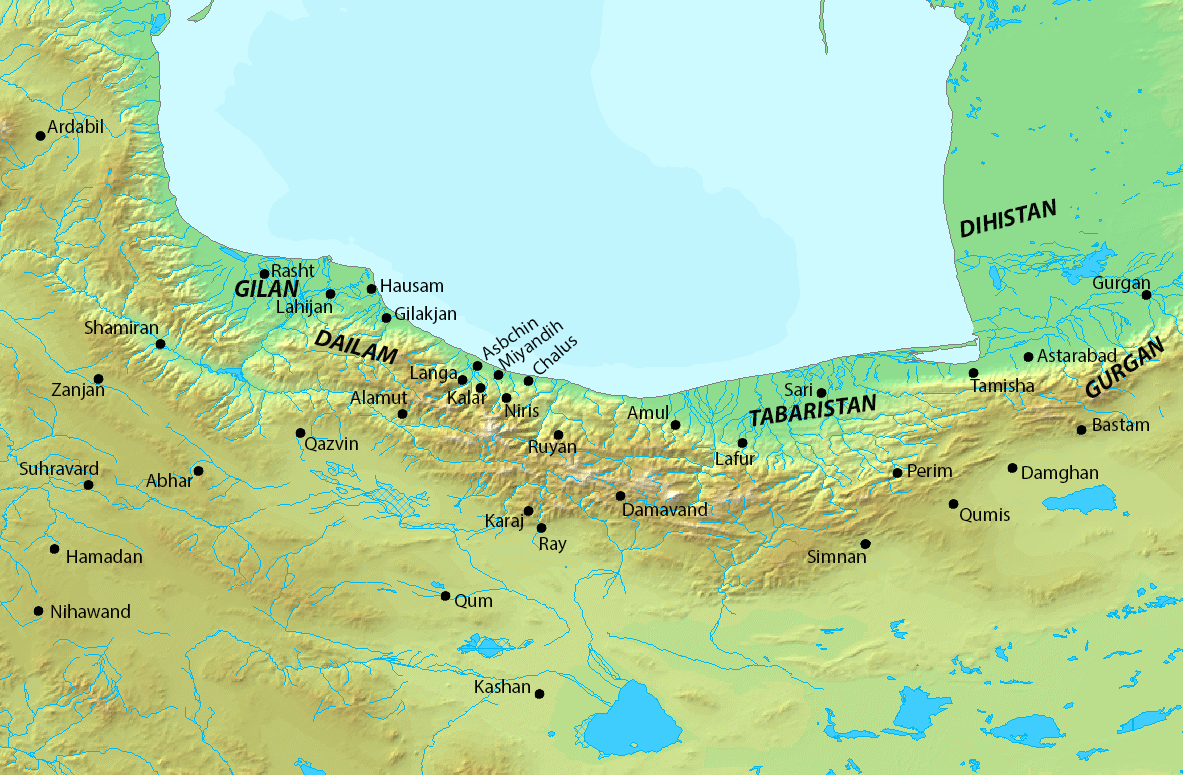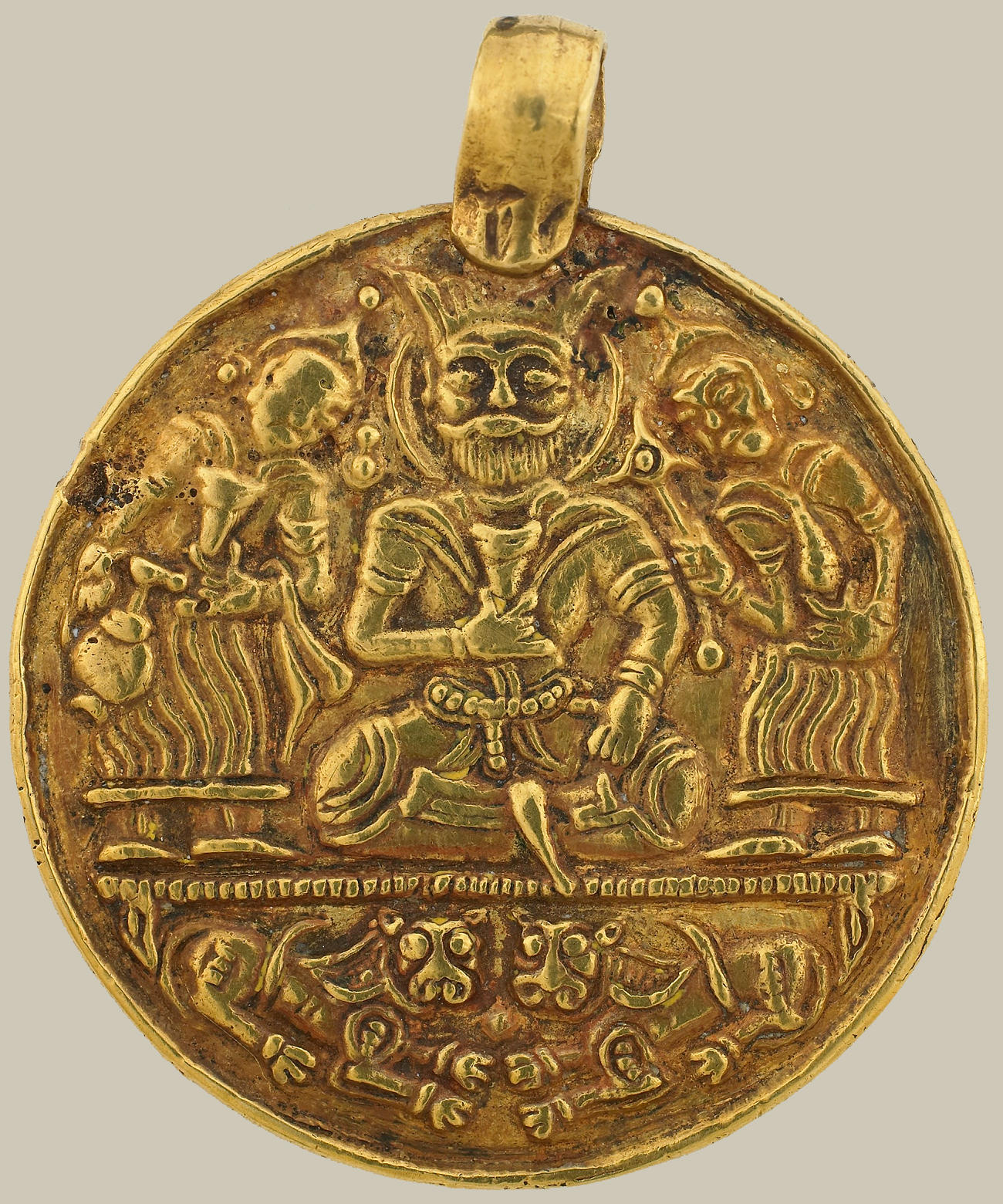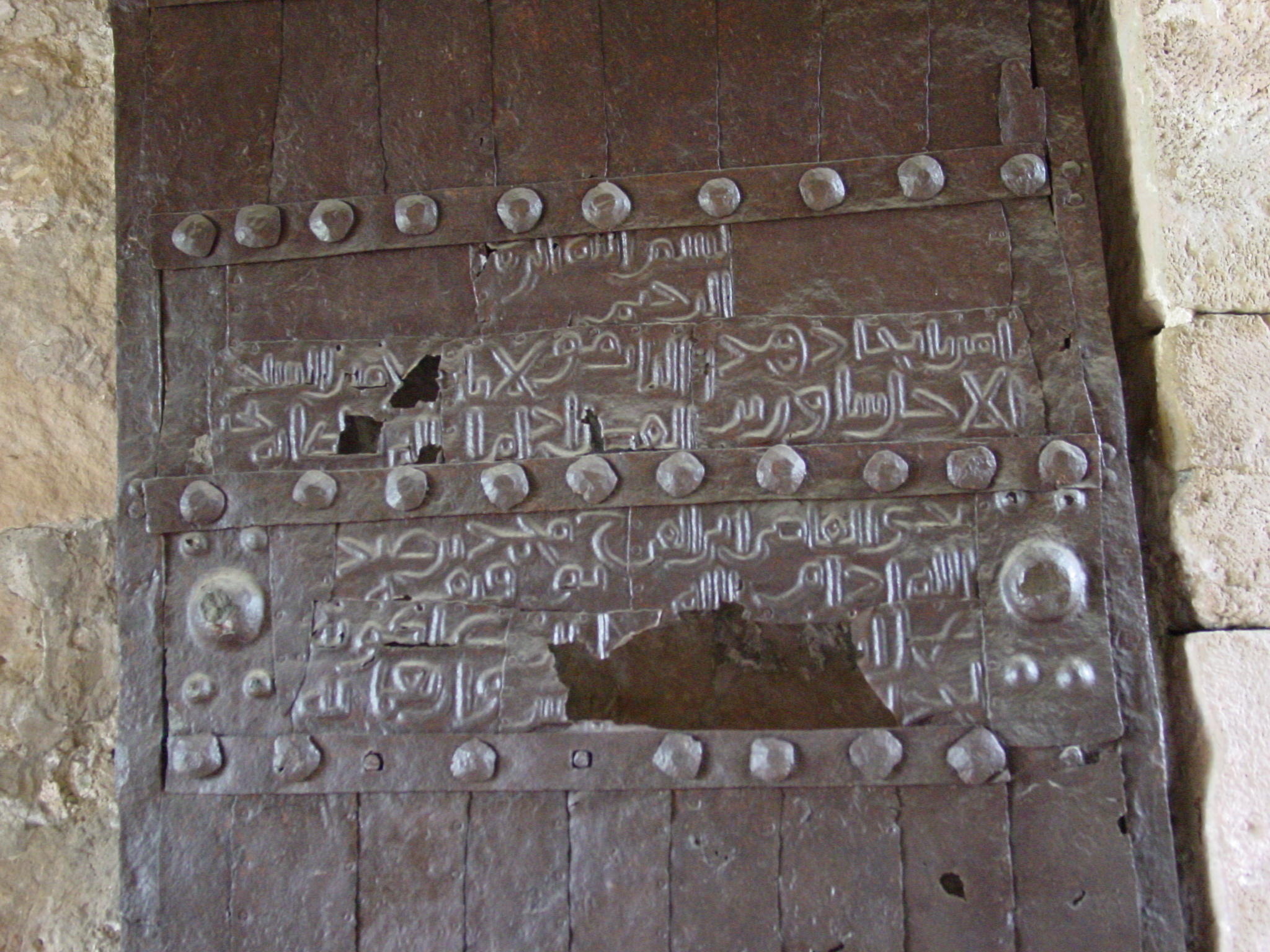|
Ibrahim I Ibn Marzuban I
Ibrahim I ibn Marzuban I (died 983) was the Sallarid ruler of Dvin (957–979) and later Azerbaijan (962–966 and 966–979). He was the son and successor of Marzuban ibn Muhammad. Biography Marzuban ibn Muhammad had designated his brother Wahsudan ibn Muhammad as his successor. When he came to Azerbaijan, however, the commanders of the fortresses refused to surrender to him, recognizing instead Marzuban's son Justan I ibn Marzuban I as his successor. Unable to establish his rule in the province, Wahusdan returned to Tarum; Justan was recognized as ruler in Azerbaijan, with his brother Ibrahim made governor of Dvin. Justan seems to have been interested primarily in his harem, a fact which alienated some of his supporters, although he and Ibrahim successfully put down a revolt by a grandson of the caliph al-Muktafi in 960. Shortly afterwards Justan and another brother, Nasir, came to Tarum, where they were treacherously imprisoned by Wahsudan, who sent his son Isma ... [...More Info...] [...Related Items...] OR: [Wikipedia] [Google] [Baidu] |
Azerbaijan (Iran)
Azerbaijan or Azarbaijan ( fa, آذربایجان, ''Āzarbāijān'' ; az-Arab, آذربایجان, ''Āzerbāyjān'' ), also known as Iranian Azerbaijan, is a historical region in northwestern Iran that borders Iraq, Turkey, the Nakhchivan Autonomous Republic, Armenia, and the Azerbaijan, Republic of Azerbaijan. Iranian Azerbaijan includes three northwestern Iranian provinces: West Azerbaijan Province, West Azerbaijan, East Azerbaijan Province, East Azerbaijan and Ardabil Province, Ardabil. Some authors also include Zanjan Province, Zanjan in this list, some in a geographical sense, others only culturally (due to the predominance of the Azeri Turkic population there). The region is mostly populated by Iranian Azerbaijanis, Azerbaijanis, with minority populations of Kurds, Armenians, Tat people (Iran), Tats, Talysh people, Talysh, Assyrian people, Assyrians and Persian people, Persians. Iranian Azerbaijan is the land originally and historically called Azerbaijan; the Azerba ... [...More Info...] [...Related Items...] OR: [Wikipedia] [Google] [Baidu] |
Rukn Al-Dawla
Hasan (died September 976), better known by his ''laqab'' as Rukn al-Dawla ( Persian: رکنالدوله دیلمی), was the first Buyid amir of northern and central Iran (c. 935-976). He was the son of Buya. Struggle for power Hasan was the son of Buya, a Dailamite fisherman from Lahijan, who left his Zoroastrian faith and converted to Islam. Hasan had an older brother named 'Ali and a younger brother named Ahmad. He also had a sister named Kama. In around 928, Hasan's brother 'Ali joined the services of Makan, who was the Samanid governor of Ray. 'Ali then managed to gain military positions for Hasan and their other brother Ahmad. At the time, Hasan was about thirty years old. When Makan attacked his Samanid overlords and was subsequently defeated by the Ziyarid prince Mardavij, the brothers transferred their allegiance to the latter. In the following years, 'Ali repudiated his subservience to Mardavij and, after some time, managed to create an empire in Fars. Durin ... [...More Info...] [...Related Items...] OR: [Wikipedia] [Google] [Baidu] |
10th-century Iranian People
1 (one, unit, unity) is a number representing a single or the only entity. 1 is also a numerical digit and represents a single unit of counting or measurement. For example, a line segment of ''unit length'' is a line segment of length 1. In conventions of sign where zero is considered neither positive nor negative, 1 is the first and smallest positive integer. It is also sometimes considered the first of the infinite sequence of natural numbers, followed by 2, although by other definitions 1 is the second natural number, following 0. The fundamental mathematical property of 1 is to be a multiplicative identity, meaning that any number multiplied by 1 equals the same number. Most if not all properties of 1 can be deduced from this. In advanced mathematics, a multiplicative identity is often denoted 1, even if it is not a number. 1 is by convention not considered a prime number; this was not universally accepted until the mid-20th century. Additionally, 1 is the ... [...More Info...] [...Related Items...] OR: [Wikipedia] [Google] [Baidu] |
Year Of Birth Unknown
A year or annus is the orbital period of a planetary body, for example, the Earth, moving in its orbit around the Sun. Due to the Earth's axial tilt, the course of a year sees the passing of the seasons, marked by change in weather, the hours of daylight, and, consequently, vegetation and soil fertility. In temperate and subpolar regions around the planet, four seasons are generally recognized: spring, summer, autumn and winter. In tropical and subtropical regions, several geographical sectors do not present defined seasons; but in the seasonal tropics, the annual wet and dry seasons are recognized and tracked. A calendar year is an approximation of the number of days of the Earth's orbital period, as counted in a given calendar. The Gregorian calendar, or modern calendar, presents its calendar year to be either a common year of 365 days or a leap year of 366 days, as do the Julian calendars. For the Gregorian calendar, the average length of the calendar year ... [...More Info...] [...Related Items...] OR: [Wikipedia] [Google] [Baidu] |
983 Deaths
Year 983 ( CMLXXXIII) was a common year starting on Monday (link will display the full calendar) of the Julian calendar. Events By place Europe * Summer – Diet of Verona: Emperor Otto II (the Red) declares war against the Byzantine Empire and the Emirate of Sicily. He assembles a large expeditionary force for a renewal of an invasion in Calabria (Southern Italy). Otto gifts the Rheingau ("Rhine District") to the Archbishopric of Mainz during the 'Veronese donation'. Otto III is elected king of Germany and Italy. * Great Slav Rising: The Polabian Slavs (Wends), mainly Lutici and Obotrite tribes living east of the Elbe River revolt against Christianity and their subjugation to the German (former East Frankish) realm of the Holy Roman Empire. They invade northern Germany, sacking the cities of Havelberg, Brandenburg and Hamburg. * King Harald Bluetooth rebels against the overlordship of Otto II. A Danish Viking army under his son Sweyn Forkbeard invades the Ma ... [...More Info...] [...Related Items...] OR: [Wikipedia] [Google] [Baidu] |
Tabriz
Tabriz ( fa, تبریز ; ) is a city in northwestern Iran, serving as the capital of East Azerbaijan Province. It is the sixth-most-populous city in Iran. In the Quru River valley in Iran's historic Azerbaijan region between long ridges of volcanic cones in the Sahand and Eynali mountains, Tabriz's elevation ranges between above sea level. The valley opens up into a plain that gently slopes down to the eastern shores of Lake Urmia, to the west. With cold winters and temperate summers, Tabriz is considered a summer resort. It was named World Carpet Weaving City by the World Crafts Council in October 2015 and Exemplary Tourist City of 2018 by the Organisation of Islamic Cooperation. With a population of over 1.7 million (2016), Tabriz is the largest economic hub and metropolitan area in northwest Iran. The population is bilingual, speaking Azerbaijani and Persian. Tabriz is a major heavy industries hub for automobiles, machine tools, refineries, petrochemicals, textiles an ... [...More Info...] [...Related Items...] OR: [Wikipedia] [Google] [Baidu] |
Rawadids
Rawwadid or Ravvadid (also Revend or Revendi) or Banū Rawwād () (955–1071) was a Sunni Muslim Kurdish dynasty, centered in the northwestern region of Adharbayjan (Azerbaijan) between the late 8th and early 13th centuries. Originally of Azdi Arab descent, the Rawadids ruled Tabriz and northeastern Adharbayjan in the late 8th and early 9th centuries. The family became Kurdicized by the early 10th century and became centered on Tabriz and Maragha. In the second half of the 10th century and much of the 11th century, these Kurdified descendants controlled much of Adharbayjan as well as parts of Armenia. History The origin of the Rawwadid dynasty was connected with the name of the tribal leader Rawwad. Rawadids were originally from Azdi Arab ancestry, and arrived in the region in the mid 8th century, but they had become Kurdicized by the early 10th century and began to use Kurdish forms like ''Mamlan'' for Muhammad and ''Ahmadil'' for Ahmad as their names. The Rawadid family mo ... [...More Info...] [...Related Items...] OR: [Wikipedia] [Google] [Baidu] |
Ganja, Azerbaijan
Ganja (; az, Gəncə ) is Azerbaijan's third largest city, with a population of around 335,600.Azərbaycan Respublikası. — 2. Azərbaycan Respublikasının iqtisadi və inzibati rayonları. — 2.4. Azərbaycan Respublikasının iqtisadi və inzibati rayonlarının ərazisi, əhalisinin sayı və sıxlığı, səhifə 66. /Azərbaycanın əhalisi (statistik bülleten) Müəllifi: Azərbaycan Respublikasının Dövlət Statistika Komitəsi. Buraxılışa məsul şəxs: Rza Allahverdiyev. Bakı — 2015, 134 səhifə. The city has been a historic and cultural center throughout most of its existence. It was the capital of the Ganja Khanate until 1804; after Qajar Iran ceded it to the Russian Empire following the Treaty of Gulistan in 1813, it became part of the administrative divisions of the Georgia Governorate, Georgia-Imeretia Governorate, Tiflis Governorate, and Elizavetpol Governorate. Following the dissolution of the Russian Empire and the Transcaucasian Democratic Federa ... [...More Info...] [...Related Items...] OR: [Wikipedia] [Google] [Baidu] |
Shaddadids
The Shaddadids were a Kurdish Sunni Muslim dynasty. who ruled in various parts of Armenia and Arran from 951 to 1199 AD. They were established in Dvin. Through their long tenure in Armenia, they often intermarried with the Bagratuni royal family of Armenia. They began ruling in the city of Dvin, and eventually ruled other major cities, such as Barda and Ganja. A cadet line of the Shaddadids were given the cities of Ani and Tbilisi as a reward for their service to the Seljuqs, to whom they became vassals. From 1047 to 1057, the Shaddadids were engaged in several wars against the Byzantine army. The area between the rivers Kura and Aras was ruled by a Shaddadid dynasty. Kurdish rulers History Shaddadids of Dvin and Ganja In 951, Muhammad established himself at Dvin. Unable to hold Dvin against Musafirid incursion, he fled to the Armenian Kingdom of Vaspurakan. His son, Lashkari I, ended Musafirid influence in Arran by taking Ganja in 971. He later expanded into Trans ... [...More Info...] [...Related Items...] OR: [Wikipedia] [Google] [Baidu] |
Shirvanshah
''Shirvanshah'' ( fa, شروانشاه), also spelled as ''Shīrwān Shāh'' or ''Sharwān Shāh'', was the title of the rulers of Shirvan from the mid-9th century to the early 16th century. The title remained in a single family, the Yazidids, an originally Arab but speedily Persianized dynasty, although the later ''Shirvanshahs'' are also known as the Kasranids or Kaqanids.Barthold, W., C.E. Bosworth "Shirwan Shah, Sharwan Shah. "Encyclopaedia of Islam. Edited by: P. Bearman, Th. Bianquis, C.E. Bosworth, E. van Donzel and W.P. Heinrichs. Brill, 2nd edition The Shirvanshah established a native state in Shirvan (located in modern Azerbaijan). The Shirvanshahs dynasty, existing as independent or a vassal state, from 861 until 1538; one of longest existing dynasties in the Islamic world, are known for their support of culture. There were two periods of an independent and strong Shirvan state: first in the 12th century, under kings Manuchehr and his son, Akhsitan I who built the ... [...More Info...] [...Related Items...] OR: [Wikipedia] [Google] [Baidu] |
Shirvan
Shirvan (from fa, شروان, translit=Shirvān; az, Şirvan; Tat: ''Şirvan''), also spelled as Sharvān, Shirwan, Shervan, Sherwan and Šervān, is a historical Iranian region in the eastern Caucasus, known by this name in both pre-Islamic Sasanian and Islamic times. Today, the region is an industrially and agriculturally developed part of the Azerbaijan Republic that stretches between the western shores of the Caspian Sea and the Kura River, centered on the Shirvan Plain. History Etymology Vladimir Minorsky believes that names such as Sharvān (Shirwān), Lāyzān and Baylaqān are Iranian names from the Iranian languages of the coast of the Caspian Sea. There are several explanations about this name: * Shirvan or Sharvan are changed forms of the word "Shahrbān" ( fa, شهربان, links=no) which means "the governor". The word "Shahrban" has been used since Achaemenian Dynasty as "Xshathrapawn" (satrap) to refer to different states of the kingdom. * Shervan in ... [...More Info...] [...Related Items...] OR: [Wikipedia] [Google] [Baidu] |
Ardabil
Ardabil (, fa, اردبیل, Ardabīl or ''Ardebīl'') is a city in northwestern Iran, and the capital of Ardabil Province. As of the 2022 census, Ardabil's population was 588,000. The dominant majority in the city are ethnic Iranian Azerbaijanis and the primary language of the people is Azerbaijani. Ardabil is known for its trade in silk and carpets. Ardabil rugs are renowned and the ancient Ardabil carpets are considered among the best of classical Persian carpets. Ardabil is also home to a World Heritage Site, the Ardabil Shrine, the sanctuary and tomb of Shaikh Safî ad-Dîn, eponymous founder of the Safavid dynasty. The population of Ardabil is about 650,000 with the majority of them being Shia Muslims. Etymology The name Ardabil comes from the Avestan ''artavil'' or ''artawila'' which means "holy place". Location Ardabil is located on the Baliqly Chay River, about from the Caspian Sea, and from the city of Tabriz. It has an average altitude of and ... [...More Info...] [...Related Items...] OR: [Wikipedia] [Google] [Baidu] |
_Azerbaijan.png)







